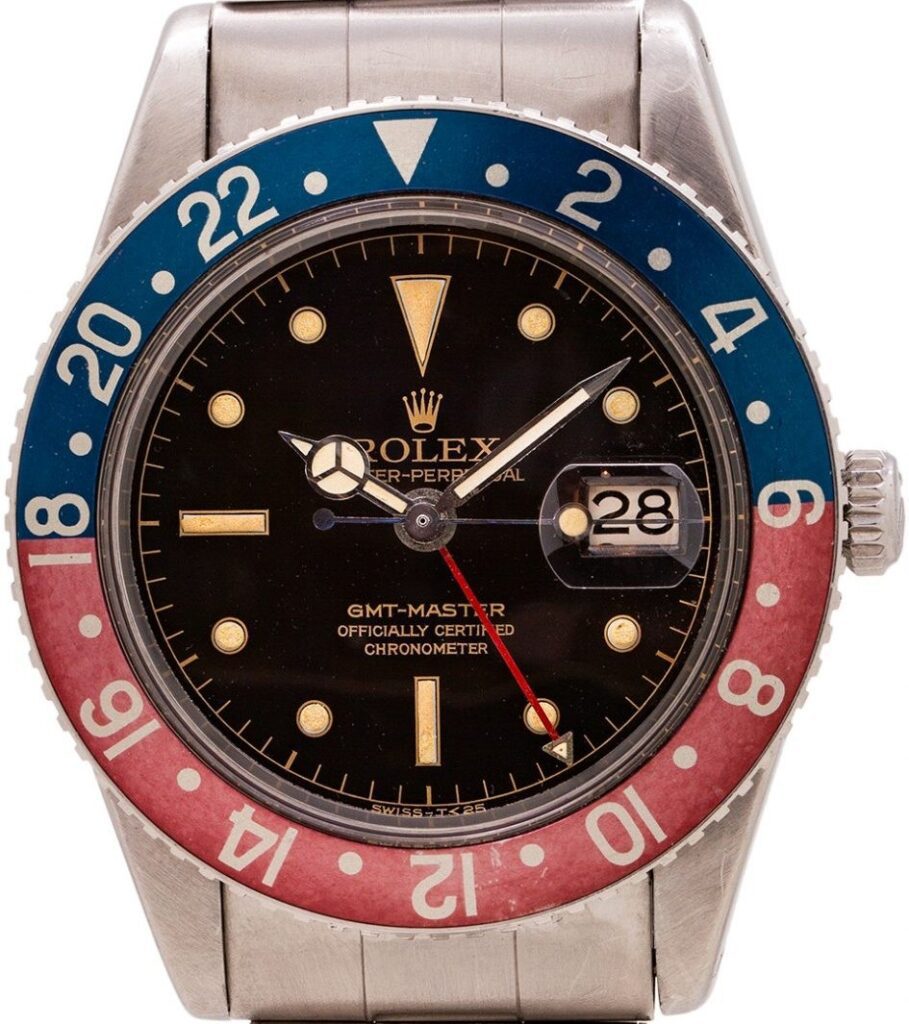The Rolex GMT-Master and The Pepsi Bezel
In January 1914, the St. Petersburg-Tampa Airboat Line conducted the world’s first scheduled airline flight, traveling a short 17 miles from St. Petersburg to Tampa, Florida, a significant event. The start of a movement had arrived, as the Airboat Line operated for about four months, carrying more than 1,200 passengers who paid $5 each. By the time the ’50s had arrived, commercial flights were common and the era became known as the ‘Golden Age’ of flying. It was a time of glamorous air hostesses, gourmet meals and an abundance of leg room for all. As commercial air travel soared, so did the global elite too. The jet set, as they were known, were the era’s international elite, men and women with the leisure time, and wherewithal, to travel the skies from destination to destination.

The watch industry took notice of the new, migratory jet set culture and its natural habitat which, in reality, was no one particular place. Rolex got involved by creating and developing the first GMT watch. What is a GMT watch? Well, GMT stands for Greenwich Mean Time, also known as Coordinated Universal Time, and is the standard world-time based on atomic time. However, in this example, the GMT timepiece is a watch that has a 24-hour, arrow-tipped, hand that indicates a second time zone, in addition to the other hands. The Jet Setter could use the GMT hand to indicate the time in another time zone, they choose, or sync it up to their local time in order to have an AM/PM indicator. Something a well-to-do traveler would find very useful. Talk about ‘Razz My Berries’! (That’s ’50’s slang, btw.)

The first GMT watch was the GMT-Master ref. 6542, by Rolex, released in 1954. The watch was a joint venture between Rolex and Pan American World Airways. Pan Am needed a watch that could help their pilots keep a reasonable sleep schedule while flying the newer faster jets on intercontinental flights. The jet setters and pilots weren’t the only ones wearing the GMT-Master, however; NASA and US Air Force pilots found them useful, too. The original GMT-Master was in production until 1959. The ref. 6542 is known to collectors as the ‘Pussy Galore,’ as she was the first, and only, female in the Bond films to be shown wearing a Rolex watch, in Goldfinger. There have been numerous versions and variations of the GMT-Master over the years. The production of the original version continued until 1999. In 1982, the Rolex GMT-Master II was released and continues production through present-day. The watch is a constant in the range of luxury Rolex models.
One note worth mentioning: on all of the GMT-Master watches is the variety of bezel colors offered. The traditional, and most popular bezel was, and is, ‘the Pepsi bezel’. The 24-hour marked rotating bezel features red and blue colors to help separate daytime from nighttime with the colors split evenly into 12 hour segments. The bezel turns, and rotates, meaning any hour can be set to correspond to the GMT hand, thus instantly tracking a second time zone. Over the years, many watch companies have imitated, and duplicated, the Pepsi bezel, giving the design a life of its own. The bezel, alone, has become iconic in the watch world.
If Pepsi is not your thing though, don’t sweat it – there’s plenty of soda to go around! In 1970, Rolex released the GMT-Master 1675/3 which was their first two-tone sports watch and featured a gold and brown colored ‘Rootbeer bezel’. In 1983, Rolex introduced the GMT-Master II ref. 16760 with the black and red colored ‘Coke bezel’. Sorry, no – Dr. Pepper is not available, as of yet.
Times Ticking has been in operation for more than 30 years, since 1982. We have performed watch repair for customers both locally and internationally. If it Ticks! We KNOW it! Our team of watch repair technicians have a combined experience in watchmaking of over 120 years.

